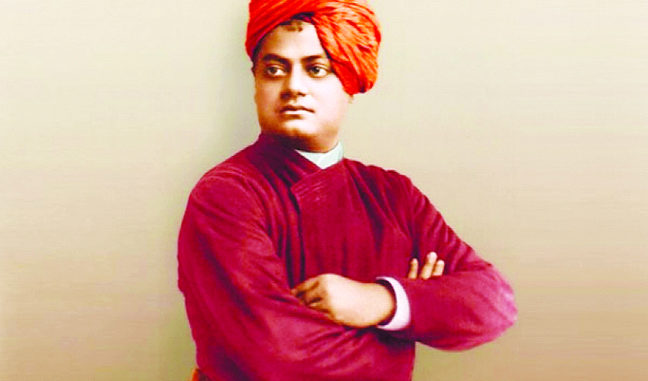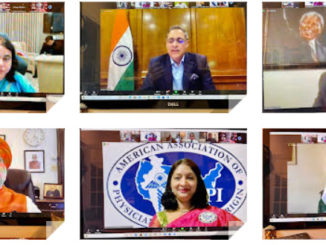
Vivekananda’s birthday, January 12, is celebrated in India as National Youth Day
National Youth Day is observed on January 12 every year, i.e., on the birthday of Swami Vivekananda– a true luminary and credited with enlightening the western world about Hinduism. An ardent disciple of Sri Ramakrishna Paramhansa, Vivekananda played a key role in revival of Hinduism in India. He is well known for his famous 1893 Chicago speech. In 1984, the Government of India declared his birth date as National Youth Day and it is being celebrated since 1985.
Vivekananda childhood name was Narendranath Dutta, belonged to an affluent Bengali family in Calcutta. He was one of the eight children of Vishwanath Dutta and Bhuvneshwari Devi. On the occasion of Makar Sankranti he was born on 12 January, 1863. His father was an attorney and an influential personality in the society. Vivekananda’s mother was a woman who has faith in God and has a great impact on his son.
At the age of eight in 1871 Vivekananda was enrolled at Ishwar Chandra Vidyasagar’s Institution and later at the Presidency College in Calcutta. He was exposed to Western philosophy, Christianity and science. He had interest in music both instrumental as well as vocal. He was active in sports, gymnastics, wrestling and body building. He was also fond of reading and till the time he had completed his graduation from the college he had acquired a vast knowledge of various subjects. Do you know on the one hand he read Hindu scriptures like Bhagvad Gita and the Upanishads and on the other hand western philosophies and spirituality by David Hume, Herbert Spencer etc.
He had grown up in a religious family but studied of several religious books and knowledge led him to question the existence of God and some time he believed in Agnoticism. But he could not completely deny the fact about the supremacy of God. In 1880, he joined Keshab Chandra Sen’s Nava Vidhan and also became a member of Sadharan Brahmo Samaj led by Keshab Chandra Sen and Debendranath Tagore.
Brahmo Samaj recognised one God unlike idol-worship. Several questions were running in the mind of Vivekananda and during his spiritual crisis he first heard about Shri Ramakrishna from William Hastie, the Principal of the Scottish Church College. He finally met Shri Ramakrishna Paramhansa at Dakshineshwar Kali Temple and Vivekananda asked him a question, “Have you seen God?” which he had asked so many spiritual leaders but was not satisfied. But when he asked from Ramakrishna, he gave such a simple answer that “Yes, I have. I see God as clearly as I see you, only in a much deeper sense”. After this Vivekananda started visiting Dakshineshwar and got several answers of the questions that were in his mind.
When Vivekananda’s father died, whole family faced financial crisis. He went to Ramakrishna and asked him to pray for his family but Ramakrishna refused and told Vivekananda to pray himself in front of Goddess Kali. He could not ask for wealth, money but instead of it he asked for conscience and reclusion. That day he was marked with spiritual awakening and a way of ascetic life was started. This was the turning point in his life and accepted Ramakrishna his Guru.
In 1885, Ramakrishna developed throat cancer and was transferred to Calcutta and then later to a garden house in Cossipore. Vivekananda and other disciples of Ramakrishna took care of him. On 16 August, 1886, Shri Ramakrishna gave up his mortal body. Narendra was taught that the service to men was the most effective worship of God. After the demise of Ramakrishna, fifteen of his disciples including Narendranath began to live together at Baranagar in North Calcutta, which was named as Ramakrishna Math. In 1887, all the disciples took vows of monkhood and Narendranath emerged as Vivekananda that is “the bliss of discerning wisdom.” All of them performed yoga and meditation. Further, Vivekananda left the math and decided to tour whole India on foot which was came to be known as ‘Parivrajak’. He saw several social, cultural and religious aspects of the people and also saw what common people faced in their daily life, their sufferings etc.
World Parliament of Religions
When he came to know about the World Parliament that was organised in Chicago, America. He was keen to attend the meeting, to represent India and his Guru’s philosophies. After various troubles, he attended the Religious meeting. On 11 September, 1893, he came up on the stage and stunned everyone while saying “My brothers and sisters of America”. For this he received a standing ovation from the audience. He described the principles of Vedanta, their spiritual significance etc.
He stayed around two and half years in America itself and founded the Vedanta Society of New York. He also travelled to United Kingdom to preach the philosophies, spiritualism and principles of Vedanta.
Ramakrishna Mission
Around 1897, he returned to India and reached Calcutta where he founded Ramakrishna Mission on 1 May, 1897 at Belur Math. The goals of the mission were based on the Karma Yoga and its main objective was to serve the poor and suffering or disturbed population of the country. Several social services are also performed under this mission like establishing schools, colleges and hospitals. Teachings of Vedanta were also provided through conference, seminars and workshops, rehabilitation work across the country.
Let us tell you that Vivekananda’s teachings were mostly based on the Ramakrishna’s spiritual teachings of Divine manifestations and his personal internalisation of the Advaita Vedanta Philosophy. According to him, the ultimately goal of life is to achieve the freedom of soul and that encompasses the entirely of one’s religion.
Death
He predicted that he will not live till the age of 40. Therefore, on 4 July, 1902, he died while doing meditation. He is said to have attained ‘Mahasamadhi’ and was cremated on the Banks of river Ganga.





Be the first to comment